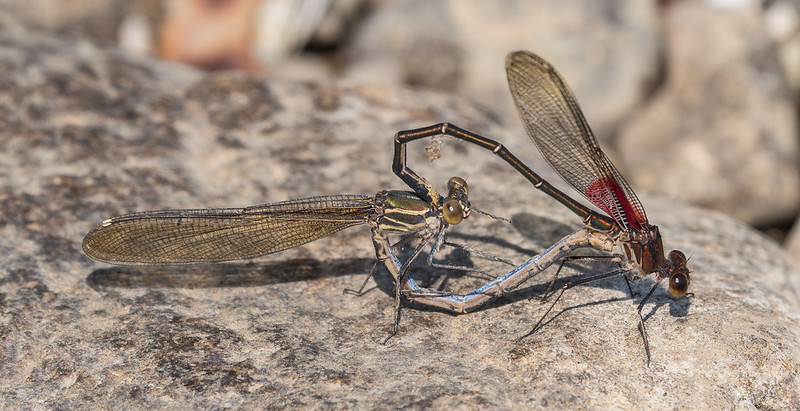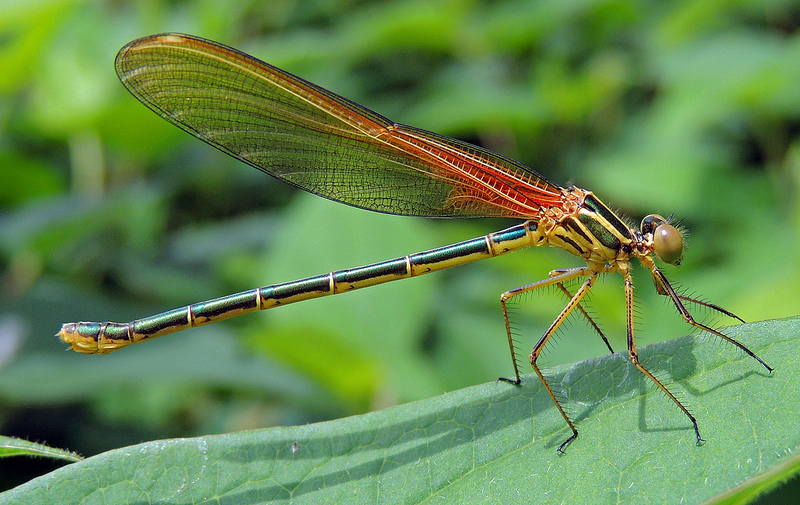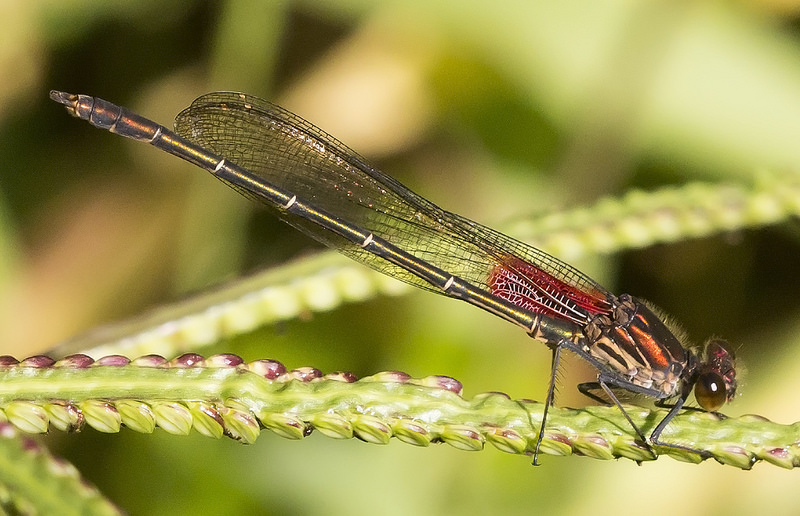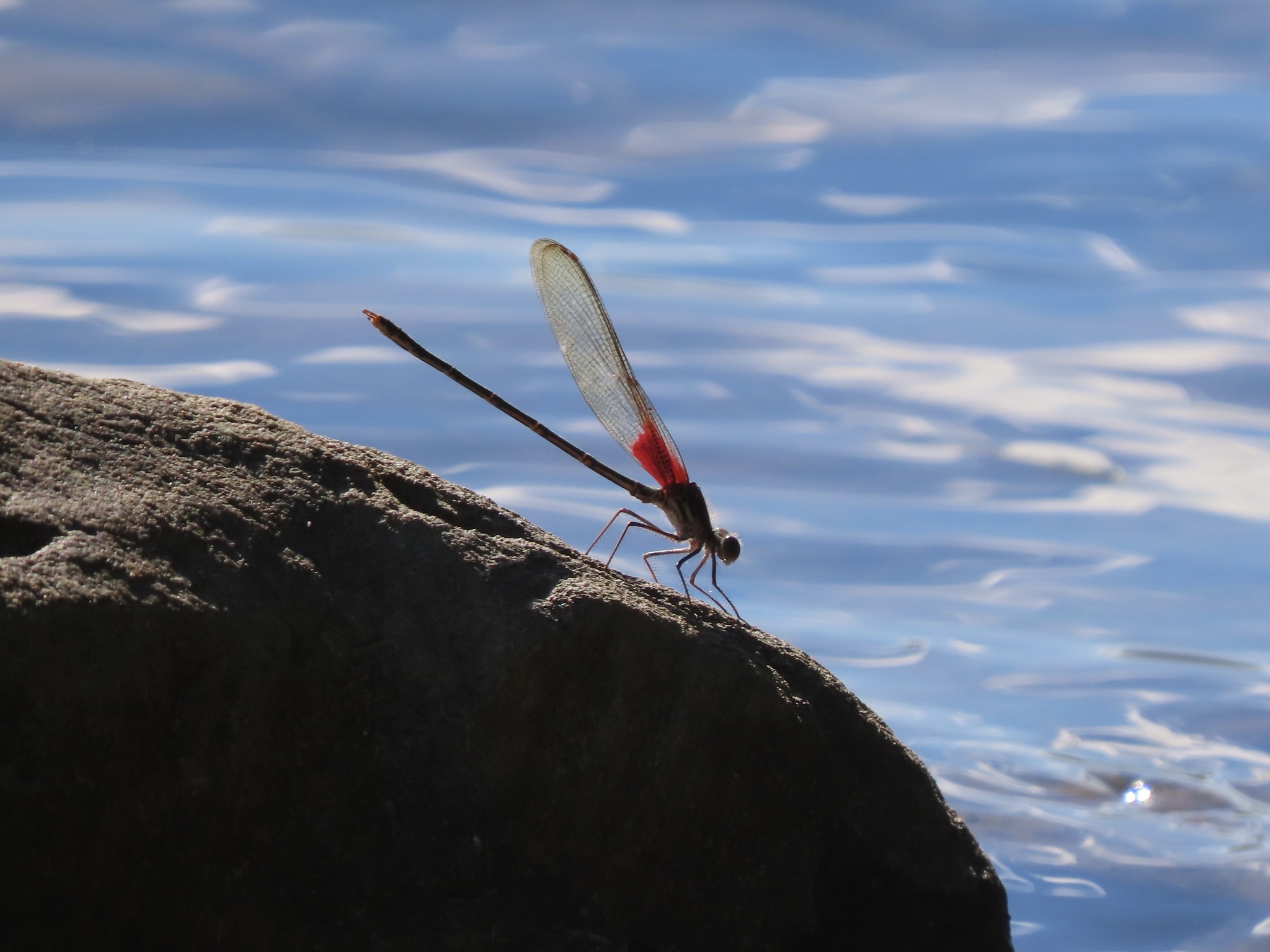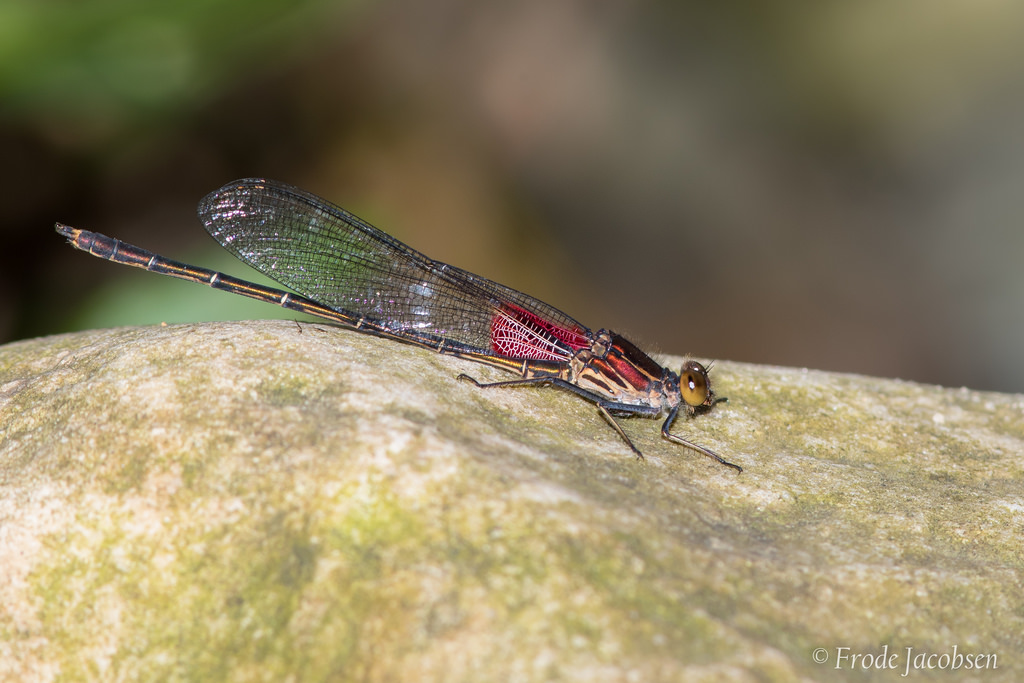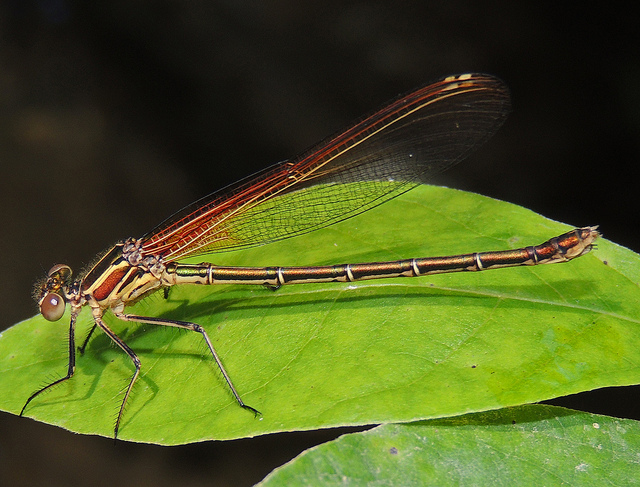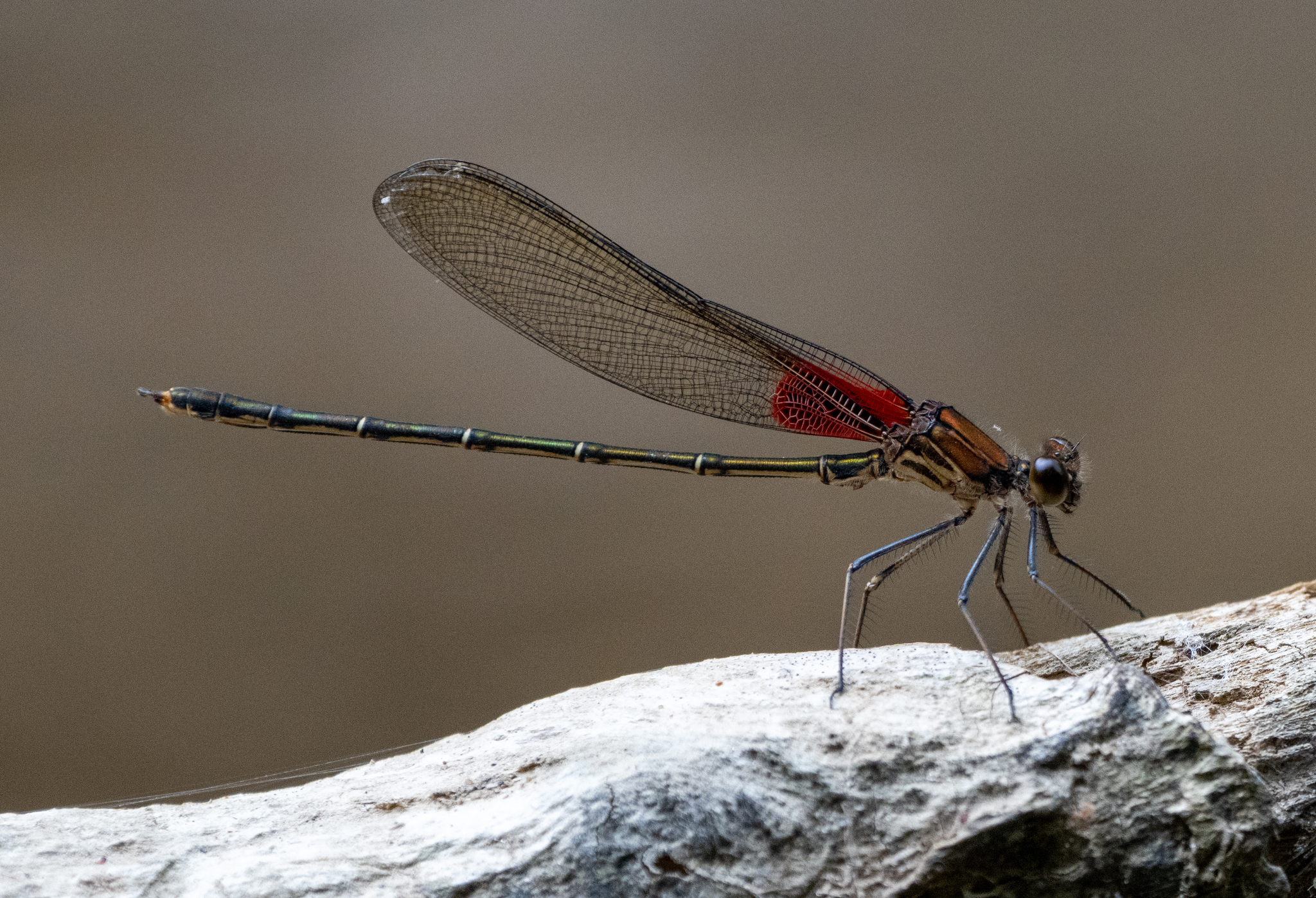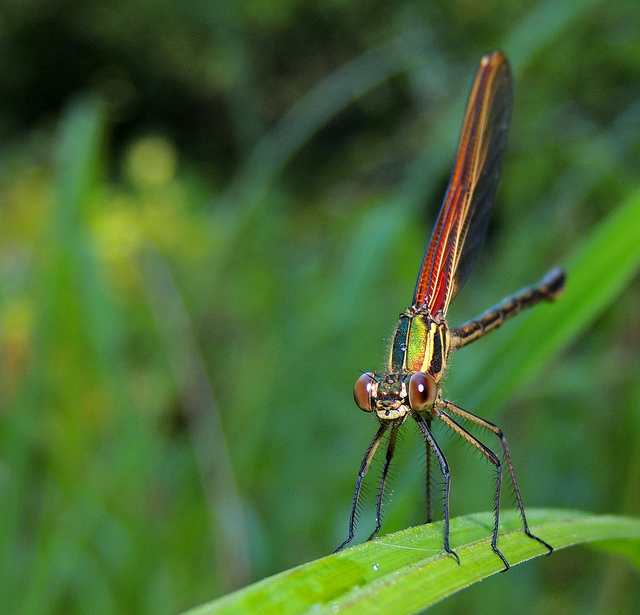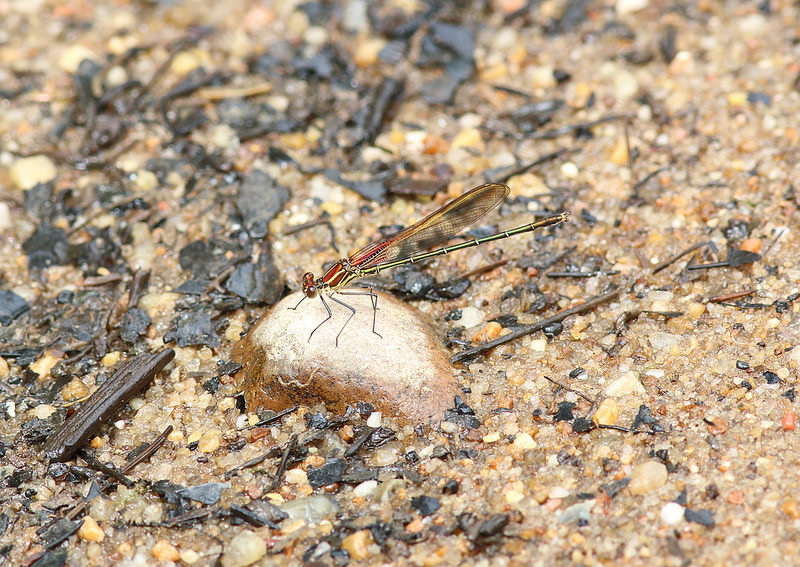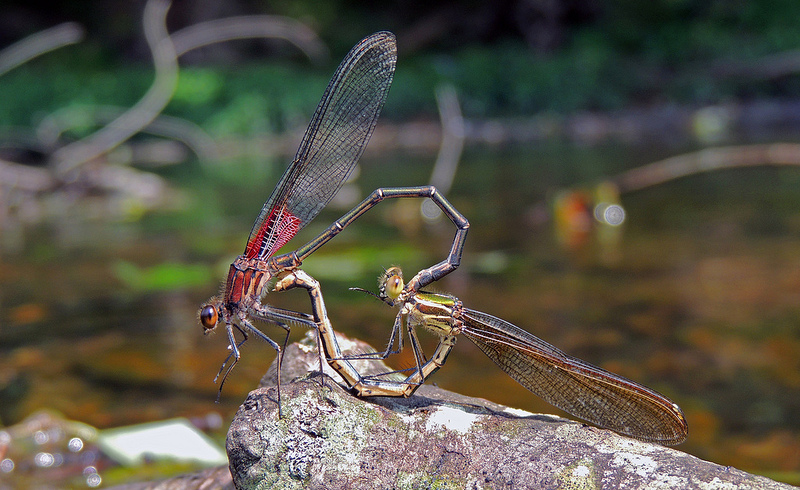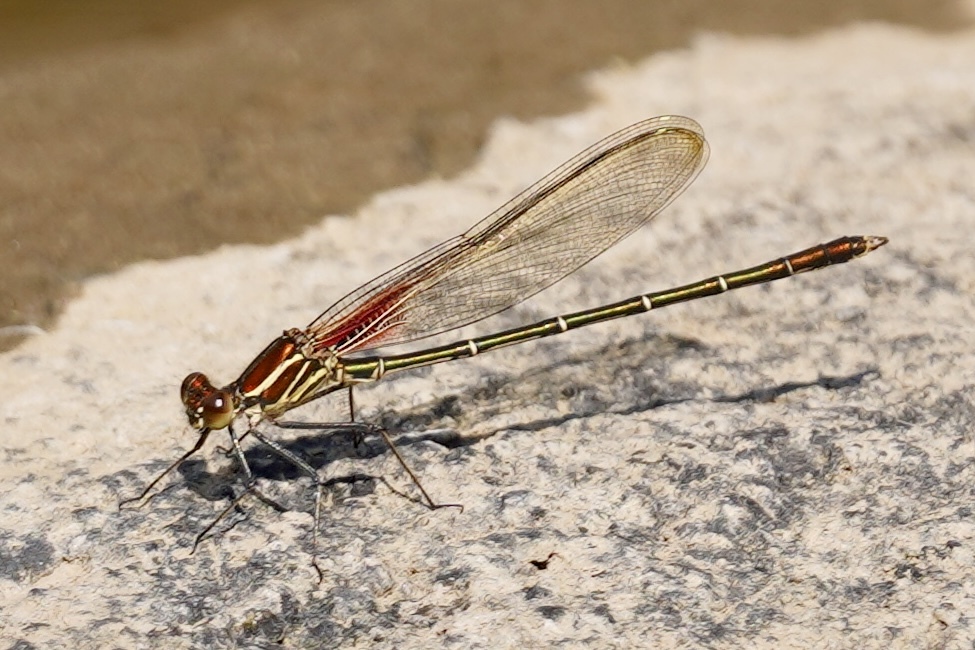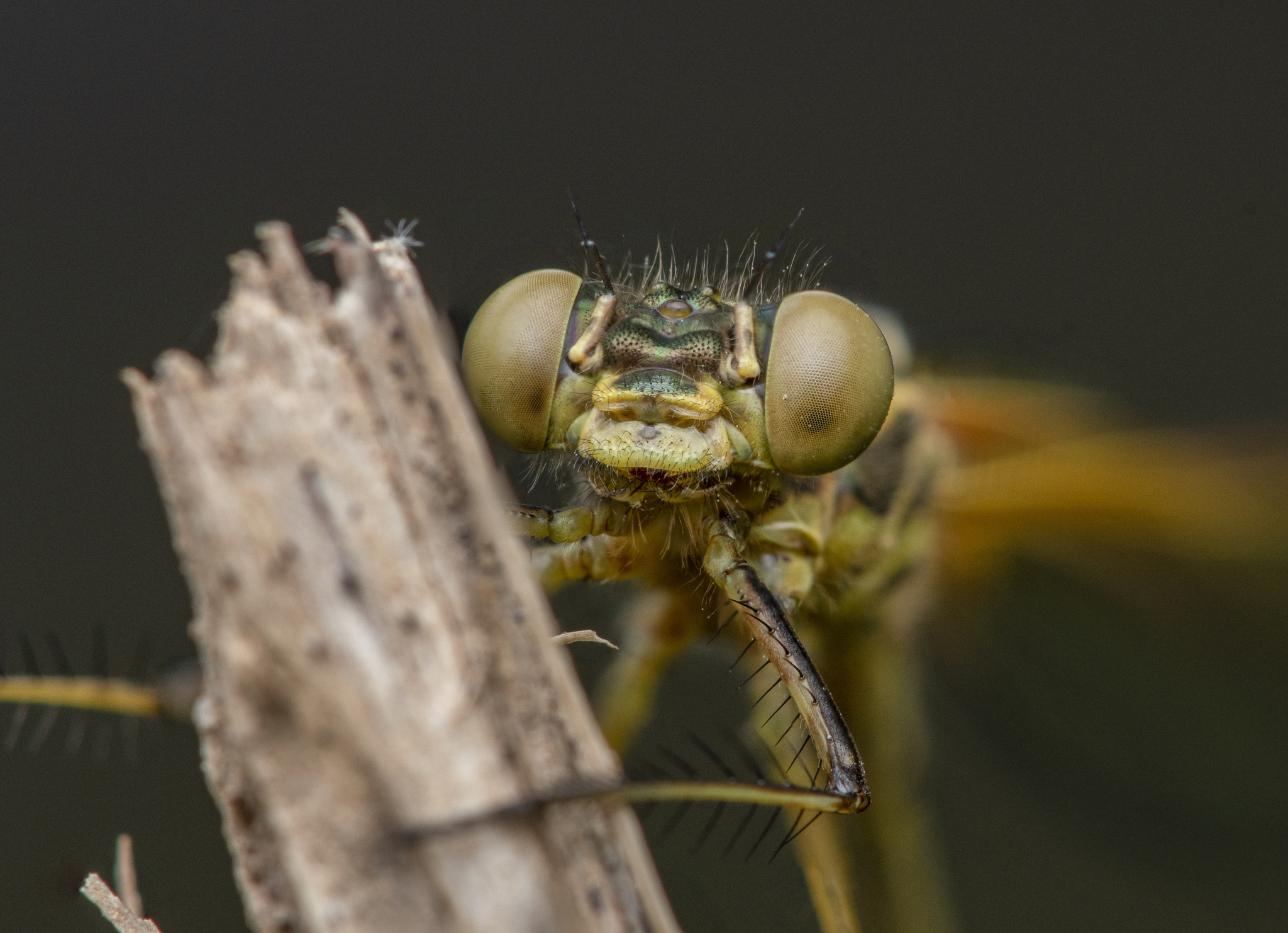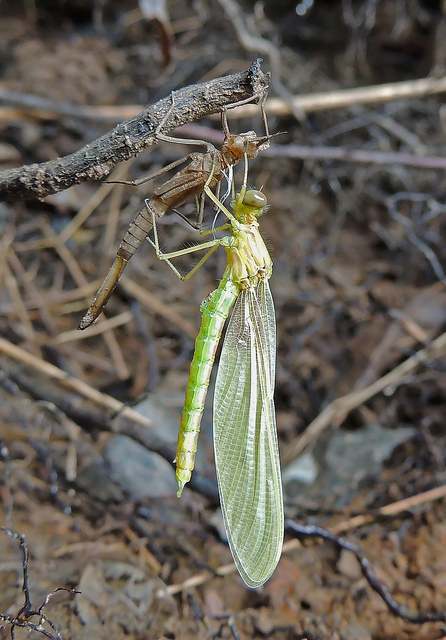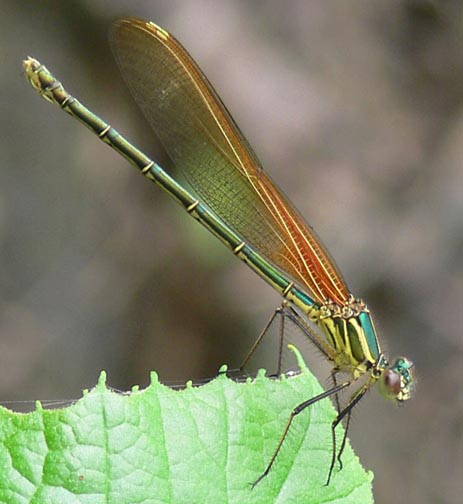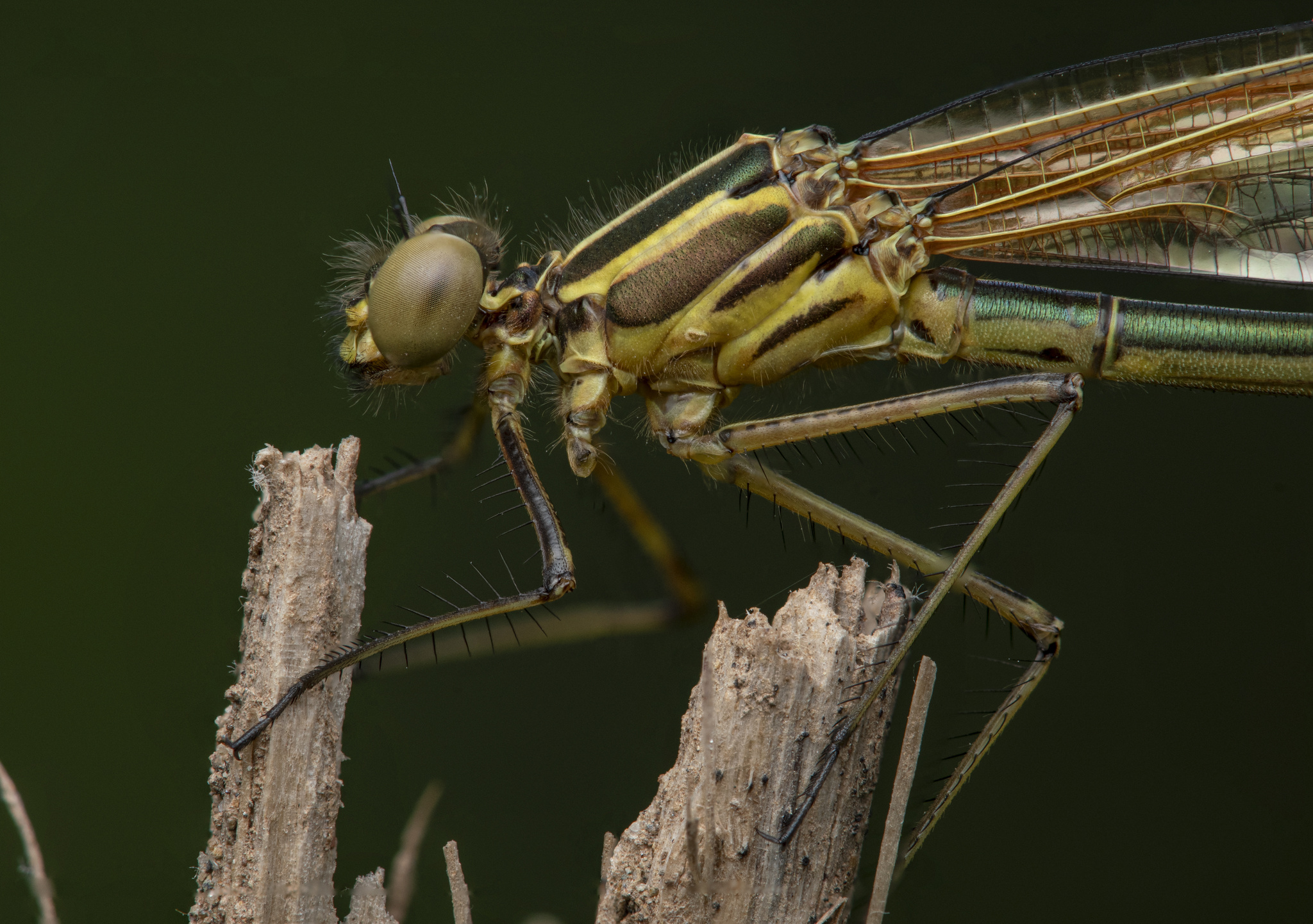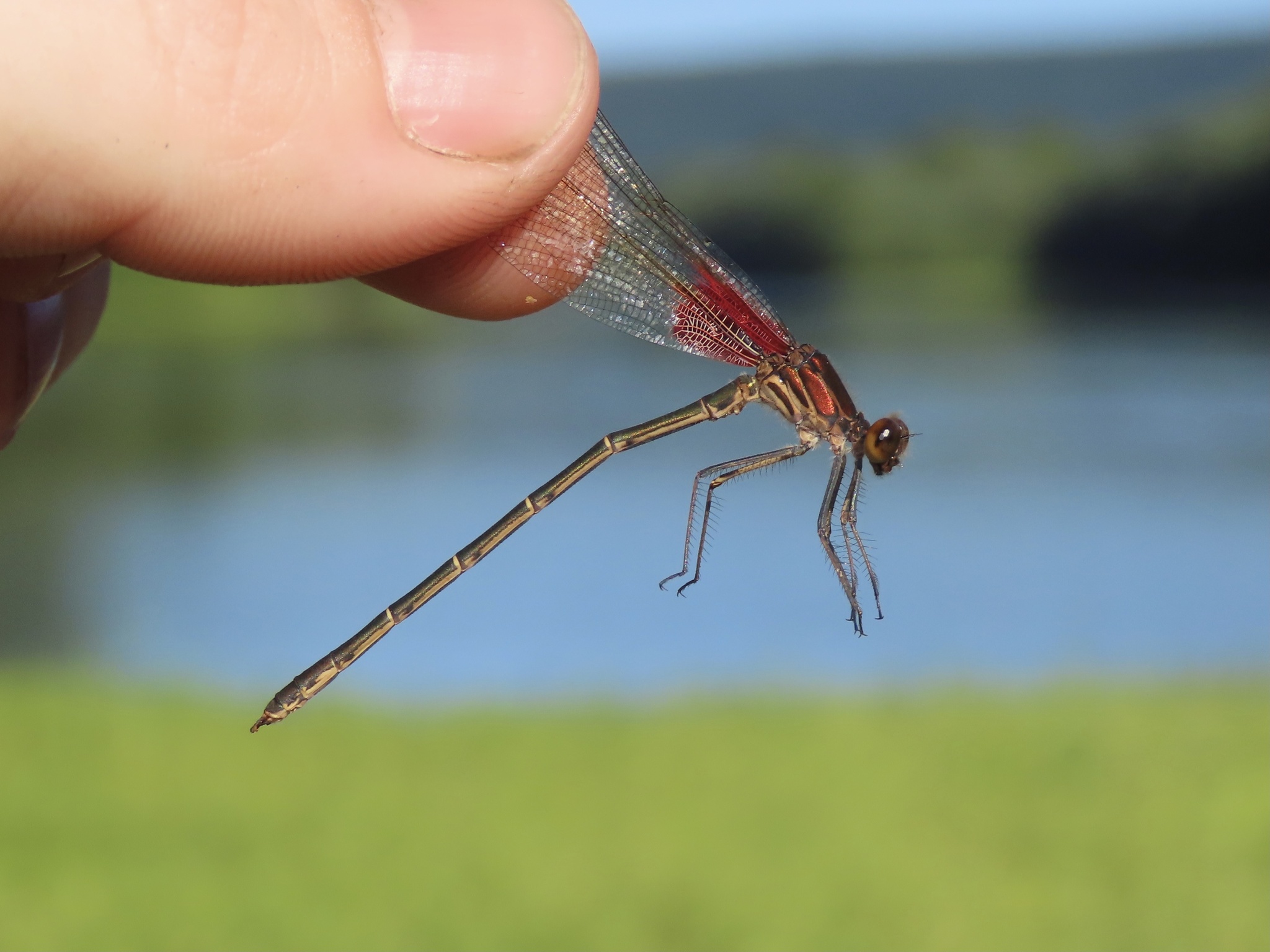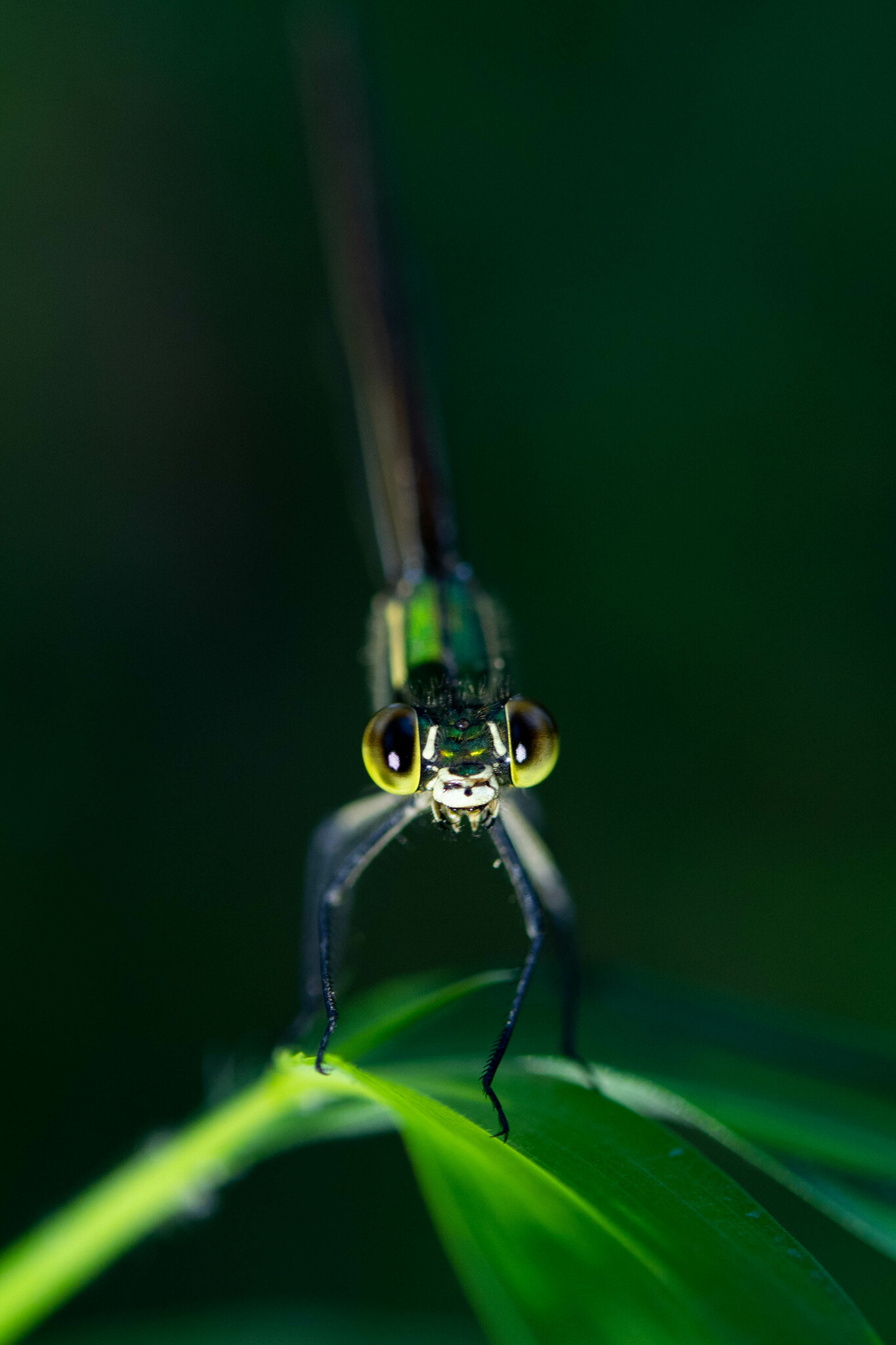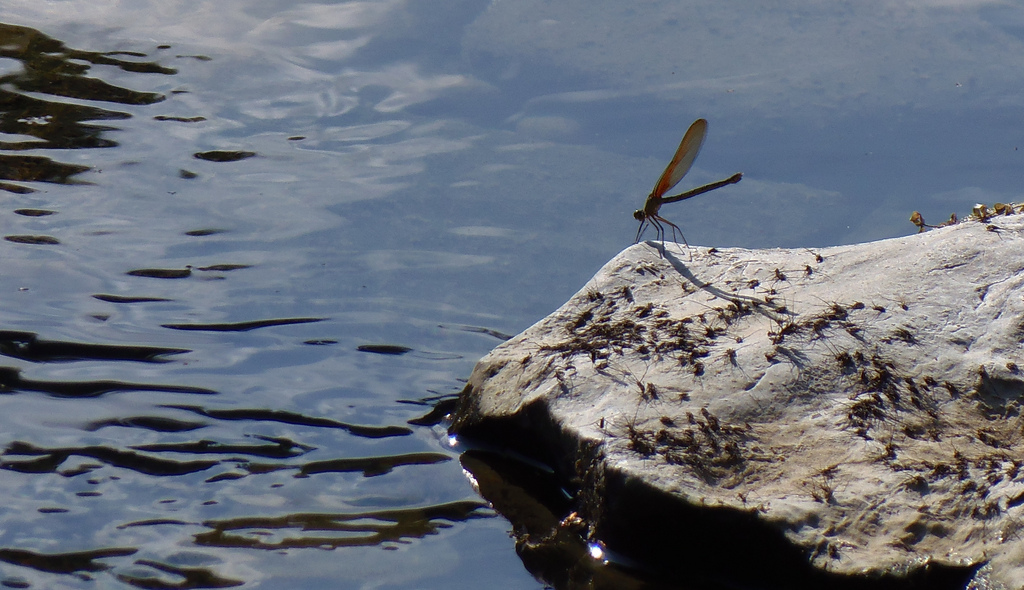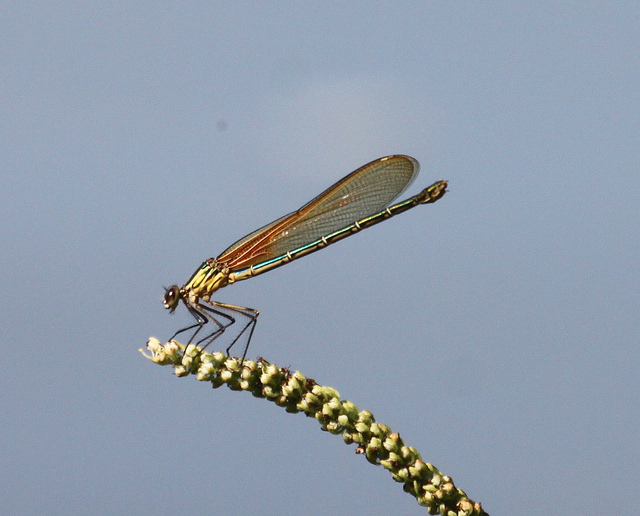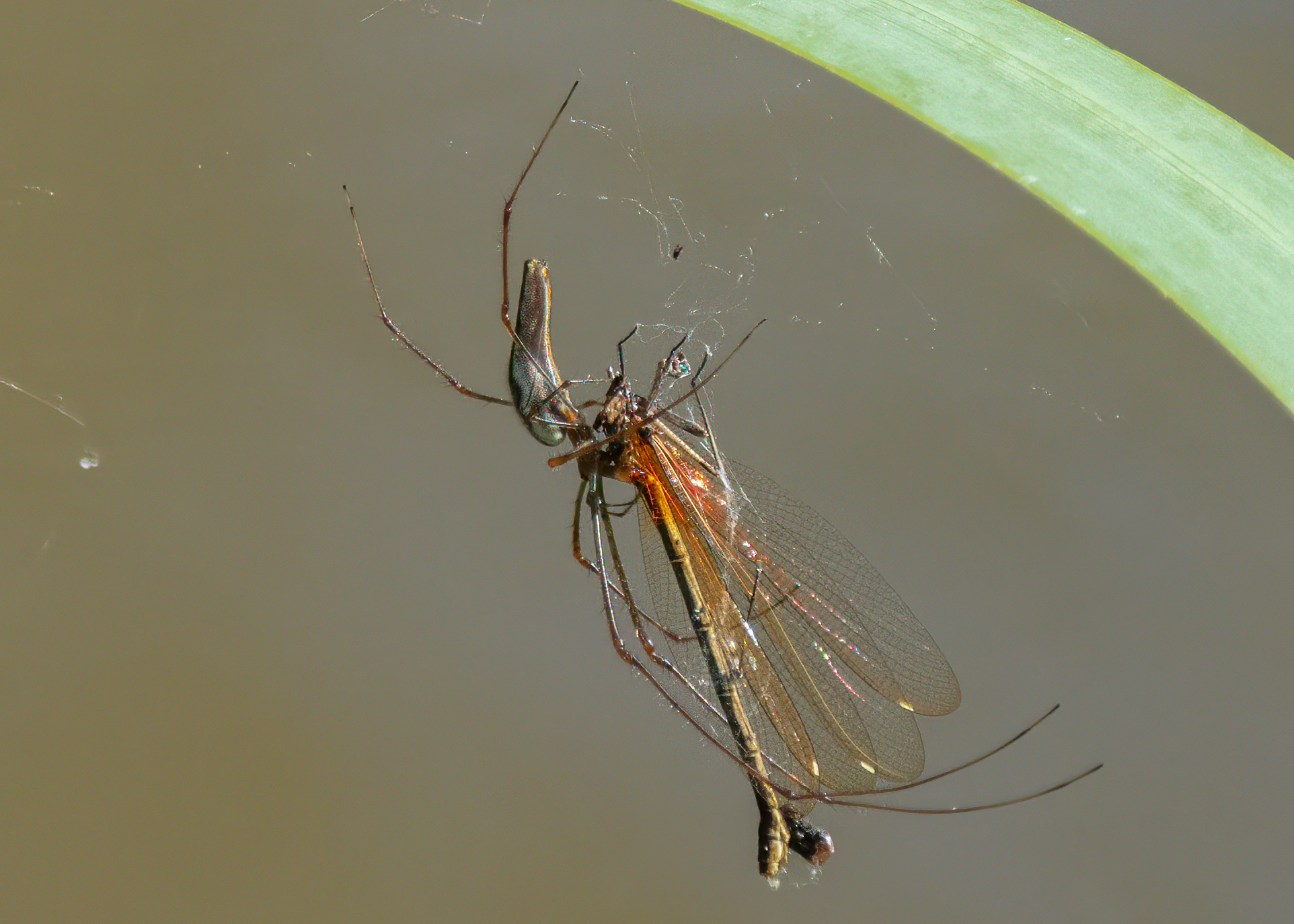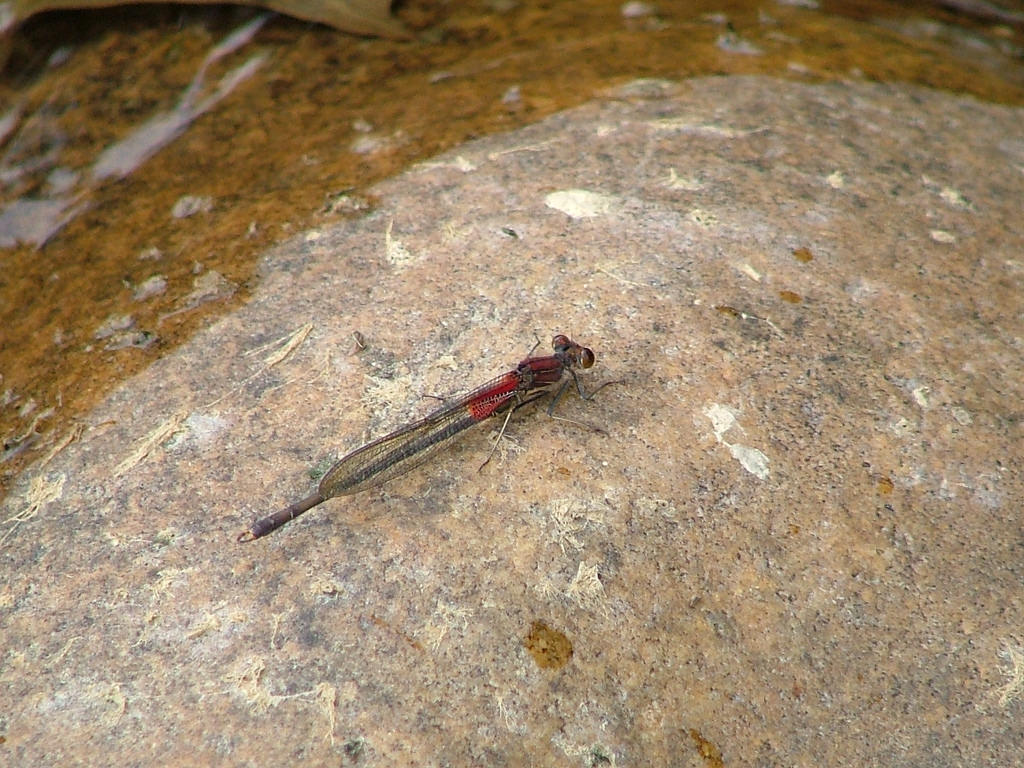Map Snapshot














397 Records
Status
American Rubyspot (Hetaerina americana) is a brightly colored, metallic species of damselfly. Males are bright metallic red, while females are largely metallic green. The name rubyspot refers to the reddish color at the bases of the wings. This species can be found at creeks to large rivers with moderate current, and aquatic vegetation. This species is especially found of riffles, where they often perch on shoreline vegetation or rocks. It becomes more common later in summer, and can be abundant at good habitat in August or September (Paulson, 2011). Abundant on Potomac River, uncommonly at other locations in Maryland (Richard Orr's Dragonflies and Damselflies of Maryland and District of Columbia).
Seasonality Snapshot
Source: Wikipedia
| American rubyspot | |
|---|---|

| |
| Scientific classification | |
| Domain: | Eukaryota |
| Kingdom: | Animalia |
| Phylum: | Arthropoda |
| Class: | Insecta |
| Order: | Odonata |
| Suborder: | Zygoptera |
| Family: | Calopterygidae |
| Genus: | Hetaerina |
| Species: | H. americana
|
| Binomial name | |
| Hetaerina americana | |

| |
| Range of H. americana [2] | |
The American rubyspot (Hetaerina americana) is a damselfly of the family Calopterygidae. Males have a lustrous red head and thorax. The abdomen of both genders is brilliant green.[3] The female may have either green or copper colored marks on the thorax.[4]
-
Female copper form
-
Female green form
During mating, a male uses claspers at the end of his abdomen to grab a female behind the head, and the female bends her abdomen to engage segments 2–3 of the male, where sperm is stored, forming a "wheel" or "valentine". The male forcefully expels sperm stored by the female from prior matings before injecting his own.
-
Male above, female below
-
Mating wheel; sperm removal
Etymology
[edit]The name highlights this damselfly's status as the most widespread of the North American rubyspots.[5] It is reported from all of the lower 48 US states except Washington and Idaho, and is also found in Mexico and southern and eastern Canada.[2]
References
[edit]- ^ "Hetaerina americana". Integrated Taxonomic Information System.
- ^ a b "Distribution Viewer". OdonataCentral. Archived from the original on September 3, 2011. Retrieved December 17, 2009.
- ^ Abbott, John C. (2005). Dragonflies and Damselflies of Texas and the South-Central United States. Princeton University Press. p. 25. ISBN 0-691-11364-5.
- ^ "Hetaerina americana". BugGuide.Net. Retrieved December 16, 2009.
- ^ Paulson, Dennis R; Dunkle, Sidney W (14 April 2009). "A Checklist of North American Odonata": 5.
{{cite journal}}: Cite journal requires|journal=(help)
